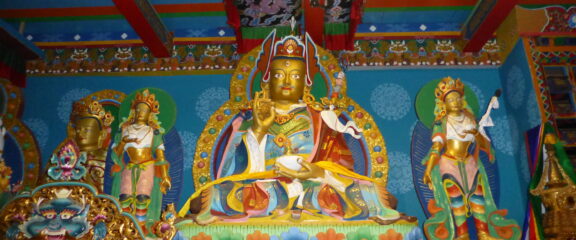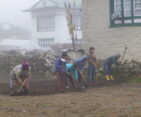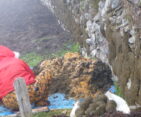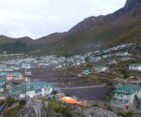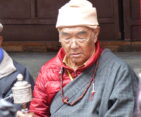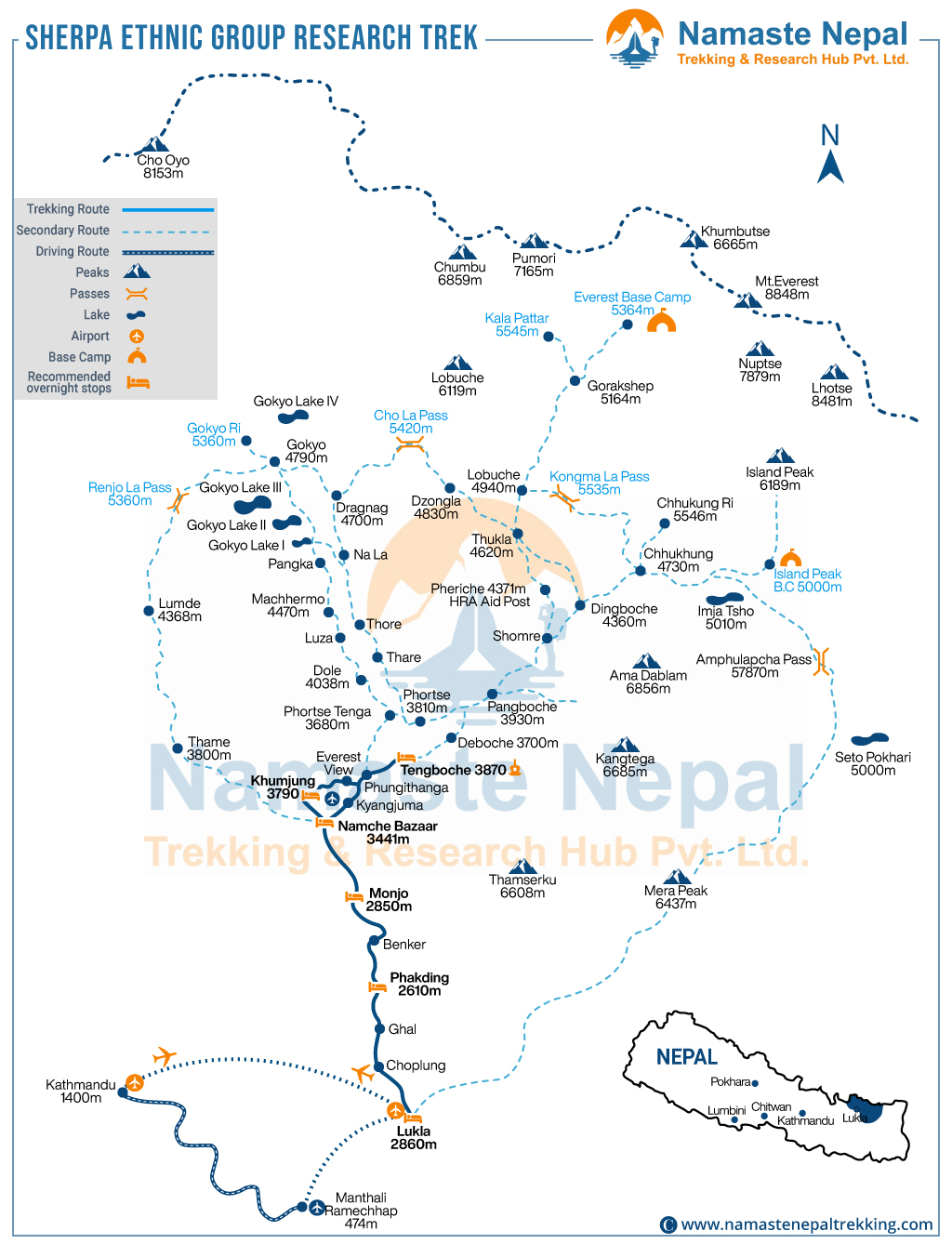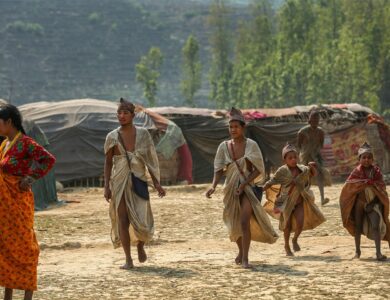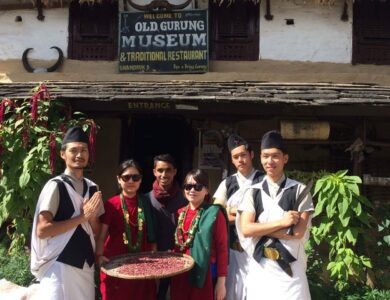Sherpa Ethnic Group Research Trek - 9 Days
09 Days
Easy
3870m
1-15 People
Kathmandu
Spring , Autumn and Early Winter
- 10 Breakfast
- 9 Lunch
- 10 Dinner
- 3-Star Hotel
- Guesthouse
- Sherpa Homestay
- Flights
- Private Tourist Vehicle
- Your safety, our no 1 priority
- Best price guarantee
- Experienced & dedicated team
- Easy booking, no hidden charge
- You can customize this trip
Highlights of Sherpa Ethnic Group Research Trek:
- Immersive Cultural Experience: Dive into the vibrant traditions and unique cultural heritage of the Sherpa people, known for their strength and endurance.
- Iconic Trekking Routes: Trek through world-renowned trails like the Everest Base Camp Trek, led by experienced Sherpa guides who provide deep insights into the landscape.
- Festive Celebrations: Join in traditional Sherpa festivals such as Mani Rimdu, where you can witness mesmerizing masked dances, sacred rituals, and communal festivities.
- Monastery Visits: Discover the spiritual heart of Sherpa communities by visiting ancient monasteries like Tengboche and learning about Sherpa Buddhism and monastic life.
- Authentic Homestays: Enjoy warm hospitality by staying with Sherpa families in their traditional homes, gaining a firsthand look at their daily routines and customs.
- Mountaineering Heritage: Learn about the legendary mountaineering skills of the Sherpas, including personal stories from their experiences on Everest and other peaks.
- Taste traditional Sherpa cuisine, including favorites like momo (dumplings), thukpa (noodle soup), and yak butter tea, offering a true flavor of their culture.
- Artisan Craftsmanship: Explore local markets filled with handmade Sherpa textiles, jewelry, and other traditional crafts, perfect for unique souvenirs.
- Delve into Sherpa history, culture, and their vital role in Nepal’s tourism and mountaineering sectors.
Trip Overview
The Sherpas, who live high in the mountains of eastern and central Nepal, are probably the best-known Nepali ethnic group. These nomadic Tibetan herders moved to Nepal about 600 years ago, bringing with them their Buddhist religion and building the beautiful gompas (monasteries) that dot the steep hillsides. Their homeland of Sherpas is in the high-altitude area of the Everest region, where many people head to catch a glimpse of Mt. Everest and Everest Base Camp.
In the current situation, the Sherpa name is synonymous with mountaineering and trekking experts. They have achieved worldwide fame for their skill, hardiness, and loyalty in these pursuits. They have achieved almost all kinds of mountaineering and climbing records in the world. Sherpas have cornered the trekking and climbing market, especially in the Himalayas. The genetic adaption to living at high altitudes makes them strong in high altitudes, have a unique haemoglobin-binding capacity, and have double nitric oxide production compared to normal human beings.
Namaste Nepal Trekking & Research Hub invites you to explore the Sherpa ethnic group in the breathtaking Everest region. This trek is perfect for those who prefer not to endure high altitudes but still want to experience the majesty of Everest and the rich culture of the Sherpa people. This journey is efficient yet incredibly rewarding, offering the true pleasure of trekking among the 8,000-meter peaks while immersing in the charming culture and hospitality of the Sherpa community.
Your adventure begins with a thrilling flight from Kathmandu to Lukla, an airstrip perched at 2,860m (9,383 ft). Far from the hustle and bustle of city life, you will start your trek walking above glacial rivers, crossing suspension bridges, and passing through colourful Sherpa villages. As you enter Sagarmatha National Park, you will be captivated by the park’s wild beauty. The first sight of Mt. Everest (8,848.86m / 29,031 ft) appears as you climb up to Namche Bazaar, the bustling heart of the Everest region, where you can enjoy the warm hospitality and vibrant culture of the Sherpa people.

The trek to Tengboche takes you through picturesque Sherpa villages and across suspension bridges adorned with Tibetan prayer flags. You will traverse lush terraced farmlands and, in the spring, walk through vibrant rhododendron forests. The view from Tengboche is simply stunning, offering frequent glimpses of the magnificent mountain lineup that surrounds you.
Waking up early to catch the sunrise, you will witness the mountains bathed in pink, orange, and gold hues—a truly spectacular Everest view. The journey then takes you to the beautiful villages of Khumjung and Khunde, where you will explore the heart of Sherpa culture. Here, you will delve deep into the traditions, daily lives, and warm hospitality of the Sherpa people, gaining an authentic understanding of their way of life.
On the return journey to Lukla, you will pass through Namche Bazaar once more, concluding an unforgettable exploration of the Sherpa ethnic group and the awe-inspiring Everest region.
Equipment List
Basic Equipment Checklist for Sherpa Ethnic Group Research Trek
The following basic equipment checklists for the Sherpa Ethnic Group Research Trek should help you with your packing. Please remember that you should always try to keep the weight of your equipment to a minimum. At the start of the trek your packed trek bag should weigh not more than 44 pounds or 20 kg.
- Base Layers: Moisture-wicking thermal tops and bottoms
- Insulating Layer: Fleece jacket or down jacket
- Outer Layer: Waterproof and windproof jacket and pants
- Trekking Pants: Lightweight, quick-drying pants
- Trekking Shirts: Long-sleeved and short-sleeved shirts
- Underwear: Moisture-wicking and quick-drying
- Socks: Wool or synthetic trekking socks (multiple pairs)
- Hat: Sun hat and warm hat
- Gloves: Lightweight gloves and insulated gloves
- Gaiters: To keep snow and debris out of your boots
- Buff/Scarf: For warmth and dust protection
- Trekking Boots: Sturdy, waterproof, and well-broken-in
- Camp Shoes: Lightweight shoes or sandals for use at camp
- Thin, lightweight inner socks
- Thick, warm wool hiking socks
- Questionnaires: To conduct research and gather comprehensive information about the Sherpa ethnic group, their way of life, and the challenges they face.
- Notebooks/Field Journal: Waterproof or durable for note-taking
- Pens and Pencils: Waterproof or all-weather
- Voice Recorder: For interviews and field notes
- Camera: With extra batteries and memory cards
- GPS Device/Map: For navigation and marking locations
- Binoculars: For observing wildlife and distant objects
- Sample Collection Bags: For collecting soil, plants, or other samples
- Smartphone/Tablet: For communication and with Research apps
- Cultural Gifts: Small tokens for local interactions
- Trekking Permits: Required permits and identification
- Cash: In local currency for remote areas
- Multi-tool/Knife: Useful for various tasks
- Daypack: Small backpack for day trips
- Water Bottles/Bladder: At least 1 liter capacity
- Water Purification: Tablets, filter, or SteriPEN
- Snacks: High-energy bars, nuts, and dried fruit
- First Aid Kit: Including personal medications, bandages, antiseptic, and blister treatment
- Toiletries: Biodegradable soap, toothbrush, toothpaste, wet wipes, and toilet paper
- Sunscreen: High SPF, lip balm with SPF
- Hand Sanitizer: Small bottle for hygiene
- Headlamp: With extra batteries
- Power Bank: For charging devices
- Solar Charger: Optional, for extended trips without electricity
- Medium-sized quick-drying towel
- Toothbrush/paste
- Multipurpose soap
- Deodorants
- Nail clippers
- Personal Hygiene
- Wet wipes (baby wipes)
- Tissue/Toilet roll
- Anti-bacterial hand wash
Short Itinerary of Sherpa Ethnic Group Research Trek
Welcome to Nepal
Fly to Lukla (2,860m / 9,383 ft) and Trek to Phakding
Trek to Namche Bazaar - Stay in a Local Sherpa Homestay
Explore Namche Bazaar: The Biggest Sherpa Village
Trek to Tengboche: Visit Biggest Sherpa Monastery
Trek to Khumjung - Stay in Sherpa Homestay
Explore in Khumjung Village, Research Sherpa Culture
Trek to Monjo Village
Trek to Lukla: The Last Sherpa Town
Fly to Kathmandu
Final Departure
Some Interesting Facts About Sherpas:
- Renowned Mountaineers: Sherpas are globally recognized for their exceptional mountaineering skills, often serving as guides and porters for expeditions in the Himalayas.
- Origin: The Sherpa people originally migrated from the Kham region of eastern Tibet to Nepal about 500 years ago.
- Language: Sherpas speak Sherpa, a Tibeto-Burman language, and many are also fluent in Nepali and English.
- Religion: The majority of Sherpas practice Tibetan Buddhism, with monasteries playing a central role in their communities.
- Elevation Adaptation: Sherpas have genetically adapted to high altitudes, with greater efficiency in oxygen utilization, which aids their endurance and resilience in mountainous environments.
- Everest Legends: Sherpas have a profound cultural and spiritual connection to Mount Everest, referred to as “Chomolungma” in their language, meaning “Goddess Mother of the World.”
- Community Structure: Sherpa society is organized into clans, each with its own lineage and heritage, emphasizing strong community ties and mutual support.
- Traditional Clothing: Sherpas wear distinctive traditional clothing, including the “chuba” (a long robe) and “tongkok” (a shorter version for men), often made from yak wool.
- Conservation Efforts: Sherpas play a key role in conservation efforts within the Everest region, promoting sustainable practices to protect their natural and cultural heritage.
Exploring the Sherpa ethnic group offers a unique opportunity to understand the cultural richness and resilience of one of Nepal’s most iconic communities.
Detailed Itinerary of Sherpa Ethnic Group Research Trek
Day 1: Welcome to Nepal
- Arrive in Kathmandu, the vibrant capital city of Nepal, known for its rich cultural heritage and bustling markets.
- Transfer to your hotel and settle in, enjoying your first taste of Nepalese hospitality.
- Meet your expedition team and receive a briefing on your upcoming Sherpa Ethnic Group Exploration.
- Explore Kathmandu’s iconic landmarks, such as Durbar Square and Swayambhunath Stupa, depending on your arrival time.
- Relax and prepare for an exciting adventure ahead, filled with cultural discoveries and breathtaking landscapes in the Himalayas.
Activity
ArrivalTrip Duration
30mMax Altitude
1,400m / 4,593ftAccommodation
3-Star HotelDay 2: Fly to Lukla (2,860m / 9,383 ft) and Trek to Phakding
- Begin with an exhilarating flight to Lukla’s Tenzing-Hillary Airport, offering breathtaking views of the Eastern Himalayas.
- Assemble your crew and trek downhill towards the Dudh Kosi River, crossing suspension bridges and passing through pine forests and terraced fields.
- Experience the first glimpses of peaks like Kusum Kangru, Nupla, Kongde Ri, and Thamserku as you journey to Phakding.
Activity
TrekkingTrip Duration
3-4Max Altitude
2,610m / 8,563ftMeals
Breakfast Lunch, DinnerAccommodation
Guest HouseDay 3: Trek to Namche Bazaar - Stay in a Local Sherpa Homestay
- Cross the Dudh Koshi River on steel cable suspension bridges, keeping an eye out for yaks and local wildlife.
- Enter Sagarmatha National Park, a UNESCO World Heritage Site, and register your trekking permits in Monjo.
- Ascend steeply to Namche Bazaar, the vibrant trading hub of the Khumbu region, with a chance to spot Mount Everest if the weather is clear.
- Explore Namche Bazaar, shop for souvenirs, and stay overnight in a traditional Sherpa homestay.
Activity
TrekkingTrip Duration
5-6 HoursMax Altitude
3,440m / 11,286ftMeals
Breakfast, Lunch, DinnerAccommodation
Local Sherpa HomestayDay 4: Explore Namche Bazaar: The Biggest Sherpa Village
- Spend the day exploring Namche Bazaar, the largest Sherpa village in the area.
- Learn about the Sherpa people’s business life after the rise of tourism.
- Visit the local museum to understand the history of mountaineering, the Sherpa people, their history, and their culture.
- Interact with the local community and immerse yourself in their way of life.
Activity
Explore Namche BazaarMax Altitude
3,440m / 11,286ftMeals
Breakfast, Lunch, DinnerAccommodation
Local Sherpa HomestayDay 5: Trek to Tengboche: Visit Biggest Sherpa Monastery
- Start with an easy trek to Kyanjuma.
- Descend to the Dudh Koshi River before ascending through rhododendron forests to Tengboche.
- Enjoy stunning views of Everest, Lhotse, Nuptse, Ama Dablam, Thamserku, and Kongde.
- Visit the Tengboche Monastery, the largest and oldest in the region, known for its spectacular views of Everest.
Activity
TrekkingTrip Duration
5-6 HoursMax Altitude
3,870m / 12,697ftMeals
Breakfast, Lunch, DinnerAccommodation
GuesthouseDay 6: Trek to Khumjung - Stay in Sherpa Homestay
- Retrace your steps to Kyanjuma, then trek up to Khumjung, one of the most beautiful villages in the Khumbu region.
- Explore the first school in Khumbu, built by the Himalayan Trust, and the nearby medical post in Khunde.
- Visit the Khumjung Monastery and immerse yourself in the authentic Sherpa lifestyle and culture.
- Enjoy stunning views of Everest, Lhotse, Nuptse, Ama Dablam, Thamserku, Kongde, and more.
Activity
TrekTrip Duration
4-5 HoursMax Altitude
3,790m / 12,434ftMeals
Breakfast, Lunch, DinnerAccommodation
Local Sherpa HomestayDay 7: Explore in Khumjung Village, Research Sherpa Culture
- Take a rest day to explore Khumjung Village in depth.
- Engage with the local community, learn about Sherpa traditions, and enjoy the serene mountain environment.
- Visit Khunde Village to learn about local customs, practices, and their way of life.
- Spend the day delving into the rich cultural heritage of the Sherpa people.
Activity
Exploration and ResearchMax Altitude
3,840m / 12,598ftMeals
Breakfast, Lunch, DinnerAccommodation
Local Sherpa HomestayDay 8: Trek to Monjo Village
- Wake up early for a sunrise view over the Everest panorama.
- Trek through the Everest View Hotel to Namche Bazaar, then descend to the Dudh Koshi River.
- Pass through birch and rhododendron forests, crossing back over familiar ground to reach Monjo.
Activity
TrekkingTrip Duration
5-6 HoursMax Altitude
2,850m / 9,350ftMeals
Breakfast, Lunch, DinnerAccommodation
GuesthouseDay 9: Trek to Lukla: The Last Sherpa Town
- Descend through the breathtaking scenery along the Dudh Koshi River, returning to Lukla.
- Delve deeper into Sherpa culture and hospitality in Lukla, the final Sherpa town on your journey.
- Engage in immersive experiences that offer insights into Sherpa traditions, daily life, and community spirit.
- Conclude your exploration with a farewell celebration featuring traditional Chang (rice beer) and authentic Sherpa cultural performances, reflecting the rich heritage of the region.
Activity
TrekkingTrip Duration
4-5 HoursMax Altitude
2,860m / 9,383ftMeals
Breakfast, Lunch, DinnerAccommodation
GuesthouseDay 10: Fly to Kathmandu
- Catch a morning flight back to Kathmandu.
- Spend the rest of the day exploring the city, unwinding with a massage or spa treatment, or sightseeing.
Activity
FlyTrip Duration
40mMax Altitude
1,400m / 4,593ftMeals
Breakfast, DinnerAccommodation
3-Star HotelDay 11: Final Departure
- Say goodbye to Nepal and enjoy your last moments in Kathmandu with a city stroll or souvenir shopping.
- A Namaste Nepal Trekking & Research Hub representative will escort you to the airport for your return flight home, with plenty of time to plan your next Himalayan adventure.
Activity
DriveTrip Duration
30mMeals
BreakfastFor the Exploration and Research Trips, We customize every itinerary based on your travel plans and preferences. Normally, we organize Sherpa Ethnic group exploration trips for about 7 to 20 days. It depends on how long you want to spend and the purpose of the tour.
Please let us know how long you want to spend on the Sherpa Ethnic Group Exploration Trip. Then, we work with you until you’re completely satisfied that you’ve got an amazing trip planned!
Build Your Own Adventure!
Collaborate with our specialists to create a unique itinerary.
Includes/Excludes
- All Airport hotel transfers by private vehicle
- 2-night 3-star hotel in Kathmandu
- The farewell dinner in Kathmandu
- Kathmandu to Lukla Flight Ticket
- Lukla to Kathmandu Flight Tickets
- All the Accommodation during the trek
- All the meals (Breakfast, Tea break, Lunch, and Dinner) with seasonal fruits during the trek.
- All necessary paperwork and permits
Sagarmatha National Park Permit
Khumbu Pasang Lhamu Rural Municipality Entrance Permit
TIMS (Trekking Information Management System) Card - All government and local taxes
- An experienced English-speaking trekking guide/Leader,
- Assistant trekking guide(1 assistant trekking guide for every 10 trekkers ),
- Sherpa porters (1 porter for every 2 trekkers) including their salary, insurance, equipment, transport food, and lodging.
- Nepal visa fee (lowest fee available is for a 15-day visa costing 30$/person)
- International airfare to and from Kathmandu
- Excess luggage charges
- Extra night accommodating in Kathmandu (if in case early return from mountain then the scheduled itinerary)
- Travel and rescue insurance
- Personal expenses (phone calls, laundry, bar bills, personal drinks, battery charge, bottle or boiling water, hot shower, wifi and or internet, etc)
- Tips for guides and porters
Complimentary
- Online Pre-Trip Briefing after booking conformation
- Free excess luggage storage facilities at our office store
- Down jacket and seasonal sleeping bag (to be returned after completion of the trip).
- Namaste Nepal’s duffle bag
- Namaste Nepal’s T-shirt
- Trekking map
- Trekking Pools (to be returned after completion of the trip).
- A self-sufficient medical first aid kit containing vital medications.
- Oximeter to check your pulse oxygen saturation and heart rate twice daily (Very useful to check AMS symptoms)
hand sanitizer and face mask


